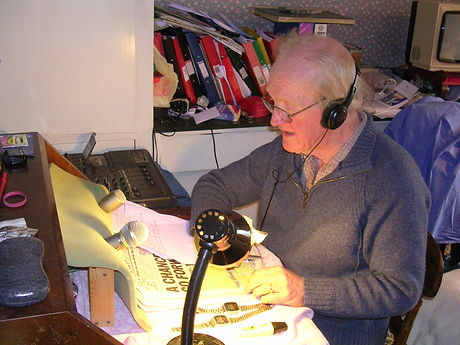
The Liley Family (my branch of it, anyway)
It was my father, Charles Liley, who spent the last years of his life, researching the LILEY name as much as possible, trying to 'go back' as far as he could.
When he started this hobby, there was precious little stuff on the internet, so he had to do it the hard way, by going to records' offices in London and travelling up north to look round cemeteries and peeling through parish records.
He managed to dispel the family myth that we were somehow related to Admiral Nelson and that somewhere in the 18th century there had been a notorious highwayman called Jasper Liley, who had ended up on the gallows in London.
Our family history is interesting, mainly because our name is rarer than most. Most Lileys are constantly misspelt as Lilley, of which there are many.
My father's major discoveries were: that we had a coat of arms in a stained glass window in a church near Rochdale (see above); that we had a road, a street, a lane and a wood named after us, near that church and that there was even a manor house nearby called Liley Hall.
Apart from that excitement, it seems that generations of Lileys spent their lives working as mechanics, cloth makers and even washing machine repairers and were mostly called James or Joseph.
But now, with the internet at my disposal, I have managed to pick up the baton, handed to me by my father, and continue the research.
So, here it is... our research to date: we can now trace our family back to 1574 and a gentleman called John Lylie, who lived in Yorkshire and was married to a lady called Margaret Brooke.
Parish records are a few and far between after that and are usually quite difficult to read. Remember that this was the time of Elizabeth I. Francis Drake was about to set off on his voyage round the world, Harrow had just been founded and Guy Fawkes was just four years old.
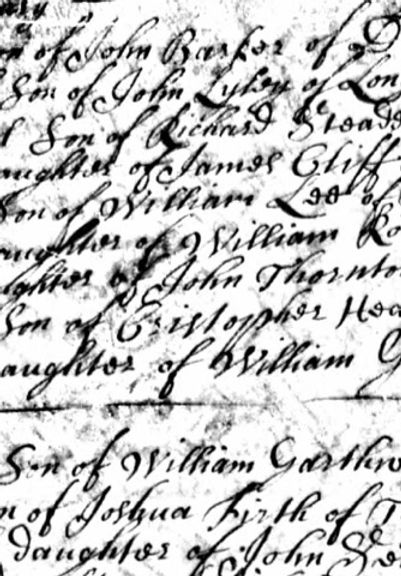
So, why a family tree on this site?
I won't bore you with all the minutiae of a rather common family but, if you're interested in history, I think it's absorbing stuff. Well, it is for anyone called Liley.
Anyway, I felt I had to include a family tree on my site, simply because it was such a labour of love of my father and he made me promise to continue the never-ending task. I have picked out a few Lileys of note below and their very unique stories - it would be a shame to lose these to posterity.
So, first a few photos (courtesy of my father's work), I dug out of my attic. These show Lileys of the last 150 years and their very European background. Apart from my German mother, there's an Austrian connection as well.
LILEYS FROM THE 19TH AND 20TH CENTURIES
TOP: HARRY (1899-1975); ANNA MAFALDA (1903-1962): ANNA (1871-1955)
MIDDLE: LIZZIE (1902-1995); ALBERT CHARLES (1930-2014); ALBERT CARL (1899-1982)
BOTTOM: AUDREY (1925 - ); GISELA (1926-2013); HEINRICH STAHL (grandfather on my mother's side)


_JPG.jpg)



_JPG.jpg)
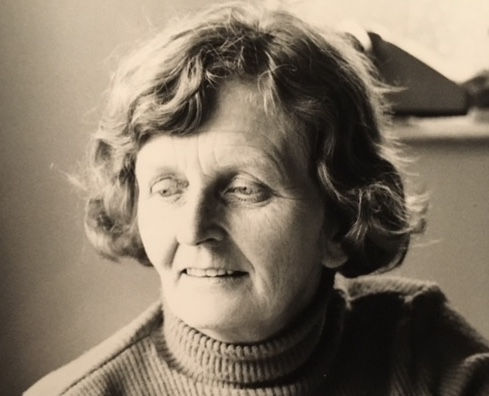
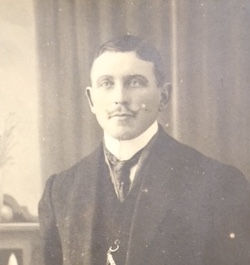

Liley or Lyley Beginings
As far as I can see, and I'm much indebted to GEORGE REDMONDS and his wonderful book (Name and History, 2004, Pages 64-65), the Lileys have been living in Yorkshire, since the end of the 15th century. According to Redmond, a man by the name of Richard Thurgarland acquired a place called Liley Hall, near Kirklees in West Yorkshire, by marrying a Beatrix Lyley. The Lyleys were 'gentry' status, apparently. At that time, the hall was named Lyley's Place, because, quite simply, it was the place where the Lyleys lived.
Redmond claims that according to various charters, the Lileys or Lyleys have lived in the Yorkshire / Lancashire area since the 12th century. It is possible, he notes, that the name derived from 'Lile' in the early 1400s (and was 'de Lisle' or 'de Lile', even earlier in Norman times).
In the earliest records, it was 'de Insula' from the Latin, meaning from the island. More interestingly, the 'de Insulas' were a 'family of considerable status in the West Riding of Yorkshire' in the Middle Ages, and had property in the nearby villages of Harewood and Beeston. Indeed, Richard Thurgarland claimed he was descended from William de Insula, when he took over Liley Hall - a somewhat flimsy claim, but something that no one was going to argue about back then.
The 'de Insulas' have history dating back to the dawn of time, well, the Norman invasion anyway. They owned most of the Isle of Wight for a few hundred years, as well as large tracts of Hampshire. They even had the ear of the king, but unlike many of their contemporaries, resisted the temptation for greater things and were happy being wealthy landowners.

Early Lileys
The Liley family (or Lisle or de Insula) did have a few scrapes though. One story, back in Henry II's time, involves a William Lyle capturing William the Lion, the King of the Scots, more by accident than plan, one wild and misty night while out on patrol near Alnwick Castle and, to prevent him escaping, the king was tied to his horse. Lyle made his way south to Northampton, where Henry II was staying at the time. The king was surprisingly unimpressed and berated Lyle for having the audacity to tie a king up. He got away with a ticking off and fades into history after that. He learned a valuable lesson though. I like to believe that the white lion on the shield in the Liley coat of arms came from this tale.
What about some heroic Lileys? Well, there was John de Lisle, who fought at the Battle of Crecy on 26 August, 1346. de Lisle commanded 6 knights and 23 archers under under William de Bohun, 1st Earl of Northampton. After the battle had been won, the King awarded him an annuity of £200. He was also made a knight of Garter in 1348 (seen here in the illustration)
Another Liley of note, Sir John Lisle, lived in Henry VIII time and was one of the 21 knights chosen by the king to take part in the tournament at the Field of the Cloth of Gold when Henry met the king of France.
John Lyly lived in Elizabethan times and was a renowned poet politician. It is thought that Shakespeare drew inspiration for 'A Midsummer Night's Dream' from Lyly's work. He did not however get any patronage from Elizabeth I and died penniless in Yorkshire in 1606.
I am not claiming any direct lineage with any of the above, except to say that it is highly likely that we all came from the same origins, at some stage or other.

The Family Crest (or so I like to believe)
Three examples of what I think the Liley coat-of-arms should be. The first goes back to the Lisle family of the fourteenth century. The middle one is from a stained glass window of the 17th century for a certain William Lyley and the one on the right is from Burke's General Armoury - that tome of unarguable heraldic evidence.
It would appear that however you look at it, the Liley family had silver lions on red or claret backgrounds, which is fine by me. I should add that there have, of late, been some rather simplistic renderings of the family crest, which involve the lily flower in some guise. Lions with crowns or lilies - you choose.

This is the crest of Gerard de Lisle, 1st Baron Lisle (1304 – 9 June 1360) of Kingston Lisle, (Latinised to de Insula "from the Island"), French de L'Isle) was an English nobleman and soldier during King Edward III's campaigns in Scotland and France. He served on the English side during the Hundred Years' War in France and fought at the Battle of Crecy, 1346.

This is the crest of a William Lyley who lived in the Rochdale area in the early 17th Century. This stained glass window sits proudly in St. Peters' Church in the village of Kirksthorpe in West Yorkshire. Whether or not it has any heraldic standing, we will never know, since it was made in 1615. However, you can see that it was derived from the de Lisle crest, with its white, crowned lion on a red background.
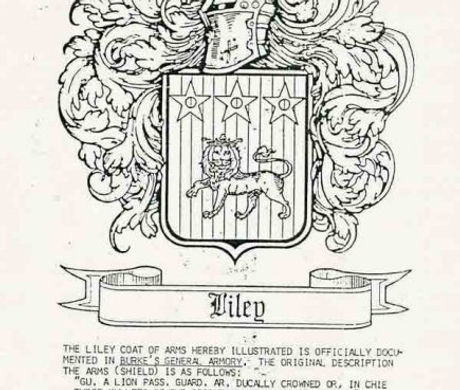
And finally, this is what you get if you look in 'Burke's General Armoury.' Again, we have the crowned silver lion on a red background, but with addition of three 'pierced' silver stars
A very common representation for a coat of arms for the Liley (Lilley, Lily, Lyllie etc) name is simply to have a three lilies on a red background. Obviously, this comes from the flower. Although it looks rather splendid, it does nor have the majesty of the white lion, I think.
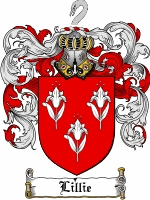

Tracing the Liley name back from the Present
My father did all the really hard work in researching our small part in Liley history. He spent hours playing with the many jigsaw pieces he was given, after sending letters to parishes and churches all over Yorkshire. The result is a rich tapestry of life through the last two hundred years. Lileys generally came from one place in Yorkshire - an area in and around present day Rochdale and were a succession of mechanics, clothmakers, textile workers, engine makers and paupers.
The linchpin for the current generations is the picture above. I know that when my father found it, he was extremely excited. It brought together all segments of the family at the time (early in the last century, about,1930). Not only are my own grandparents there (Albert and Lizzie Liley- top left), there's also Albert's long lost brother, Harry (the dapper gent in the middle with the moustache); my great grandfather on my father's side (Albert - seated far right), as well as Anna (Perko) Liley, who was actually Austrian (she's seated in the left) and James Norman Liley, who was born in St. Petersburg, while his father (Albert, on his right) worked there, installing a textile machine for the tsar.
It all stems from here, my father told me. The different strands of the Liley family somehow all meet in this photo.
Albert Carl Liley (my grandfather on my father's side)
My grandfather was a navigator and 'mapper' in a biplane during the First World War. His job was to sketch German trench positions while flying low over the various battlefields. He was 'lucky' to get a whiff of mustard gas and be sent back to England, where he lived out the rest of the war. I still have a German bugle he allegedly picked off the battlefield. He lived a long and happy life with his wife, Lizzie; played the piano passably well and worked at a company called 'the Brush' in Loughborough, Leicestershire.
They moved to Wellingborough where they spent their last days in our house. They also loved going on cruises around the Mediterranean and they both did part-time work in retirement at a school for disabled children in Northamptonshire (Hinwick Hall).
He died one evening, after a laughing fit, while watching The Paul Daniels Magic Show on television.

Albert Carl Liley with his wife, Lily (Lizzie Somerside Forshaw)) and their daughter, Audrey.

Albert always carried around a small black notebook when he was working at the 'Brush' in Loughborough, Leicestershire. In it, were many pages of tightly-written script and diagrams of how various engine parts worked. It was like his own personal manual for when something had to be repaired.

This is a picture of Albert and Lizzie back in the late 1920s. The head of the son, Albert Charles, can be just seen.

This was taken in the 1970s when Albert lived in Wellingborough, Northants. Both Lizzie and he worked part-time at a school for disabled children at the time (Hinwick Hall)
James Norman Liley
The story of James Norman Liley, the little sulky looking boy in the main photo above, sort of demonstrates everything about the times that they all lived in. He was born in Russia (St. Petersburg) in 1911, just as the seeds of the Russian Revolution were being sown. I remember my grandfather telling me stories about James Norman watching white guards riding down St. Petersburg streets and breaking up demonstrations. James Norman then served in the British army in India in the Second World War. He moved back in 1945 and began a new life in Klagenfurt, Austria, his mother's country (Anna Perko - the seated lady in the picture above). He worked there as an English teacher and also composed music until his death in Klagenfurt in January, 1981.
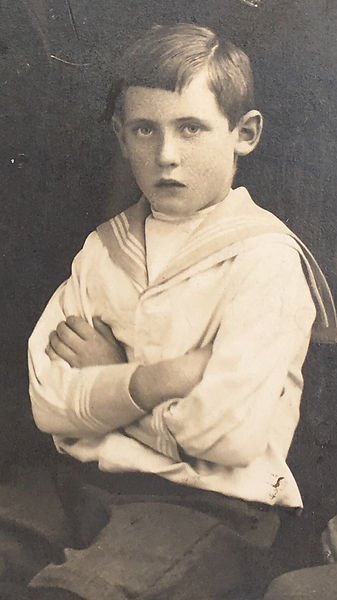
Heinrich Stahl (grandfather on my mother's side)
I never knew my mother's father. I only knew of him through my mother's stories. He lived with his family in Bergischen Land (mountain country) in the middle of Germany, near Wuppertal and Solingen, where they made all the steel. His main occupation was driving steam locomotives all over Germany. My mother said that she was sometimes allowed to accompany him on his trips, riding at the front and helping to shovel coal into the furnace. During the Second World War, he drove troop trains to Russia and was extremely lucky to survive the day and night British and American bombings, which specifically targeted the rail network and trains. He was killed by accident by American soldiers advancing through his village in the last week of the war.

During the Second World War, Heinrich (who was extremely anti-Nazi) , did the Russian troop train run many times. Here he is sitting on a train which was not so fortunate.

This is on of the very few pictures of my grandparents on my mother's side (Anna and Heinrich Stahl). This was taken during the Second World War in Dieringhausen, where the Stahl family lived.

These are the service medals for my grandfather from both world wars.

And this is the passbook which he needed during the Second World War. It not only acted as a form of identification, but also gave details of his job and his next of kin.
Charles Liley (my father)
Albert Charles Liley (my father), or Charles, as he preferred to be known, spent most of his life in Wellingborough, Northants, after moving there from Manchester, where he met Gisela, Herta Renate Stahl, his wife, and had their first son, Adrian Michael (me). He spent his life teaching art, first at the local secondary school (Westfield School) and then at Weavers School. He had two pictures exhibited at the Royal Academy Summer Exhibition, helped create the local arts society in Wellingborough and, in later years was a leading light in the local Talking Newspaper for blind people . He did his national service in Au and was involved in Forces Broadcasting.

Charles and Gisela with Stephen (their second son) with Pootsy Bear, on a cross-Channel ferry in around 1961

Charles was awarded this certificate when only 18 years old, after attempting to save three swimmers who had got themselves into difficulty off the coast of the Isle of Wight, while he was on holiday there with his parents and sister.

Charles always loved British history and attended battle recreations whenever possible. He was given the chance of wearing this Roundhead helmet at a show in Kettering around 2006. He was visited Naseby (in Northants) and tried to see the annual recreation of the Battle of Tewkesbury, when visiting his second son, Stephen, in Cheltenham.
